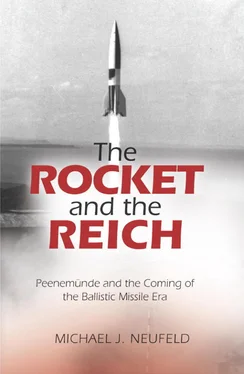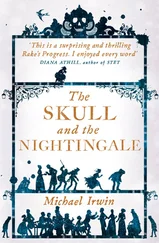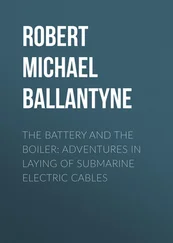Michael Neufeld - The Rocket and the Reich
Здесь есть возможность читать онлайн «Michael Neufeld - The Rocket and the Reich» весь текст электронной книги совершенно бесплатно (целиком полную версию без сокращений). В некоторых случаях можно слушать аудио, скачать через торрент в формате fb2 и присутствует краткое содержание. Город: Washington, Год выпуска: 2013, ISBN: 2013, Издательство: Smithsonian Books, Жанр: История, military_weapon, на английском языке. Описание произведения, (предисловие) а так же отзывы посетителей доступны на портале библиотеки ЛибКат.
- Название:The Rocket and the Reich
- Автор:
- Издательство:Smithsonian Books
- Жанр:
- Год:2013
- Город:Washington
- ISBN:978-1-58834-466-3
- Рейтинг книги:3 / 5. Голосов: 1
-
Избранное:Добавить в избранное
- Отзывы:
-
Ваша оценка:
- 60
- 1
- 2
- 3
- 4
- 5
The Rocket and the Reich: краткое содержание, описание и аннотация
Предлагаем к чтению аннотацию, описание, краткое содержание или предисловие (зависит от того, что написал сам автор книги «The Rocket and the Reich»). Если вы не нашли необходимую информацию о книге — напишите в комментариях, мы постараемся отыскать её.
The Rocket and the Reich — читать онлайн бесплатно полную книгу (весь текст) целиком
Ниже представлен текст книги, разбитый по страницам. Система сохранения места последней прочитанной страницы, позволяет с удобством читать онлайн бесплатно книгу «The Rocket and the Reich», без необходимости каждый раз заново искать на чём Вы остановились. Поставьте закладку, и сможете в любой момент перейти на страницу, на которой закончили чтение.
Интервал:
Закладка:
Michael J. Neufeld
THE ROCKET AND THE REICH
Peenemünde and the Coming of the Ballistic Missile Era
To the tens of thousands of prisoners who suffered, died—or survived—Dora and the other concentration camps of the V2 program
May their sacrifice never be forgotten

Maps

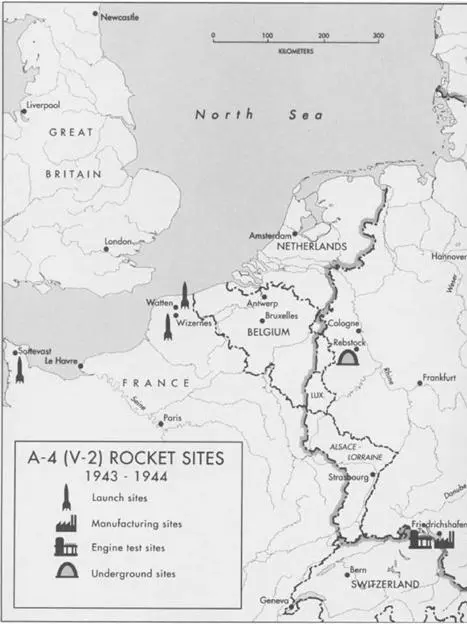
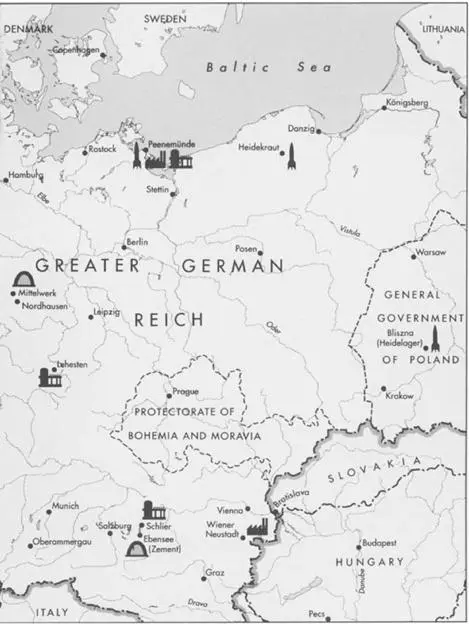
Preface
I first became interested in the German rocket engineers as a small boy in Canada when my father discussed the space race. Did the Russians get the better Germans, or did the Americans fail to exploit their advantage when they got Wernher von Braun’s group after the war? That was one of the questions bandied about in the media and around the dinner table at the time. In the aftermath of those early discussions—and televised launches—I lived and breathed spaceflight as a teenager in the 1960s. My ambition to become an aerospace engineer or an astronomer was not realized, however, so I followed other interests and became a historian specializing in modem Germany. Only after revising my dissertation in labor history did I turn back to my old avocation in search of a field that would sustain my enthusiasm. The history of science and technology in general, and the story of German rocketry in particular, seemed to offer an ideal combination of my new and old interests.
In mid-1988 I came to the National Air and Space Museum as a visiting fellow. I soon concluded that a new book on Peenemünde and the V-2 would be far from redundant, that indeed it was a necessity. Although the development of the first large ballistic missile was one of foundations of the nuclear arms and space races, the topic’s history had not been well researched. The books on this subject, especially those in English, tended to cite the memoirs of participants uncritically, while giving a less-than-frank treatment of the Nazi records of prominent leaders like von Braun. With two exceptions, Heinz Dieter Hölsken’s Die V-Waffen (The V-Weapons) and David living’s The Mare’s Nest , serious archival research was entirely neglected and even Irving’s research was incomplete and unfootnoted.
In the mid-1980s a new genre began to appear: books by investigative journalists on the scandals of Project Paperclip, which brought German scientists and engineers to the United States after the war. Those works were largely engendered by the Rudolph affair. In 1984 the Justice Department forced Arthur Rudolph, the former project manager of NASA’s Saturn V moon rocket, to leave the United States because of his involvement with concentration camp labor during V-2 production. While the resulting exposés uncovered much new information about the Nazi records of the German rocketeers, all too often they combined sensationalism with a simplistic view of life in the Third Reich.
The present work thus aims to provide a balanced and readable history of the German Army liquid-fuel rocket program based on archival research. The symbolic center of the book is the rise and fall of the Army rocket facility at Peenemünde as a major research and development institution. Because the stunning technological revolution effected at Peenemünde is so central to understanding the shape of the institution and the character of the program, I do not shy away from discussions of the technology. But, for the sake of readability, I eschew jargon or a more theoretical examination of the place of Peenemünde in the history of science, technology, and the military in the twentieth century. The epilogue will draw attention to some interesting aspects of Peenemünde’s legacy which emerge from the rocket program’s relationship with Nazism and its transfer to the United States and elsewhere. Readers looking for a more theoretical or historiographic examination of those topics are invited to consult my articles listed in the bibliography. Those who want more detail about the organizational history of the rocket program should turn to Appendix 2.
This book would not have been finished without the National Air and Space Museum (NASM) and the Smithsonian Institution. The project was supported in its first two years by a NASM Verville Fellowship and by a Smithsonian Institution Postdoctoral Fellowship. The National Science Foundation also made a large contribution through a Scholar’s Award (DIR-8911103) from the Science and Technology Studies Program. During my fellowship period in the NASM Department of Space History, David DeVorkin, Allan Needell, Robert Smith, Martin Collins, John Mauer, Frank Winter, Ron Doel, Michael Dennis, Paul Ceruzzi, Cathy Lewis, Gregg Herken, Joe Tatarewicz, Mandy Young, Joanne Bailey, and Pat Fredericks provided me with a fruitful intellectual climate and helpful administrative support. Frank Winter in particular gave me the benefit of his extensive knowledge of the early rocket societies.
Since my move to the Aeronautics Department as a curator in 1990, its chairman, Tom Crouch, has not only given me much time to finish the book but also provided me with the fruits of his own deep thinking about Peenemünde and Wernher von Braun. I have learned much about the Luftwaffe from Tom Dietz, while Anita Mason and Collette Williams have given cheerful and helpful administrative assistance. I have also benefited from discussions with Von Hardesty, Dom Pisano, Peter Jakab, Jacob Vander Meulen, and Claudio Segrè. I would further like to thank the NASM branch of SI Libraries, especially its current and former branch chiefs, Martin Smith and Dave Spencer, for allowing me to borrow a microfilm machine, plus Mary Pavlovich for her help with interlibrary loans. I am also grateful to the Archives Division, above all to Paul Silberman for turning up the long-forgotten and mislabeled “FE” microfilm of Peenemünde documents.
Every chapter was carefully read by two close friends and colleagues from my days in Space History: David DeVorkin, curator of the history of astronomy, and Ron Doel, twice a visiting fellow in the Department. Their good advice has been incorporated everywhere in the book. Robert Smith also gave me valuable comments on early chapters. They can take no responsibility for my errors and misjudgments, however, nor do the opinions expressed in this book necessarily represent the views of the National Air and Space Museum or the Smithsonian Institution.
From outside the museum, I would especially like to thank Michael Hubenstorf of the Free University of Berlin, who provided me with comfortable accommodations, warm hospitality, and helpful research hints during my stays in that city. Richard Muller of the Air Command and Staff College, a former NASM fellow, sent me material about the Luftwaffe and gave me the benefit of his encyclopedic knowledge of German military history. Guillaume de Syon of Boston University, Richard Breitman of American University, Donald MacKenzie of the University of Edinburgh, and Wolfgang Rüdig of the University of Strathclyde have kindly supplied me with archival and secondary information relevant to the book, while Yves Béon and Roland Hautefeuille, both of Paris, generously gave me copies of their books. Joyce Seltzer of Harvard University Press, my former editor at The Free Press, made many helpful suggestions for improving the writing of this study. Sheila Weiss of Clarkson University encouraged me to take the plunge into the new field in the first place.
Читать дальшеИнтервал:
Закладка:
Похожие книги на «The Rocket and the Reich»
Представляем Вашему вниманию похожие книги на «The Rocket and the Reich» списком для выбора. Мы отобрали схожую по названию и смыслу литературу в надежде предоставить читателям больше вариантов отыскать новые, интересные, ещё непрочитанные произведения.
Обсуждение, отзывы о книге «The Rocket and the Reich» и просто собственные мнения читателей. Оставьте ваши комментарии, напишите, что Вы думаете о произведении, его смысле или главных героях. Укажите что конкретно понравилось, а что нет, и почему Вы так считаете.
